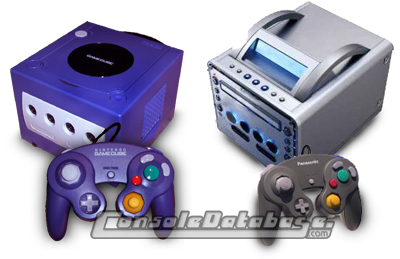![]()
http://www.consoledatabase.com


The Nintendo GameCube was unveiled at Nintendo\'s Space World 2001 conference in Japan and released on September 14th 2001. The original code name was Project Dolphin but Nintendo chose not to call the console by this name and instead changed it to "StarCube" for a short time, then ended up with "GameCube". While the 128-bit console is so small, it is more powerful than the Sony PlayStation 2.
Nintendo\'s focus is on gameplay; making fun and exciting games that are very playable. The games promise to get the player more involved and be more realistic than ever before.
The GameCube continues the tradition of four controller ports, carried over from the Nintendo 64. The controllers improve on the already excellent design of the N64 controllers, being easy to use and having a wide variety of functions. The GameCube was released in North America on 5th November 2001 while the European and Australian releases occurred in 2002 (May 17th in Australia).
The GameBoy Advance can be attached to the Nintendo GameCube and games will interface between the two consoles.
Nintendo are licensing the GameCube technology to other manufacturers so they can create their own GameCubes. Nintendo and Panasonic have made an agreement, thus the Panasonic GameCube, known as "Q". Panasonic\'s GameCube was also shown at Nintendo\'s Space World 2001 and boasts compatibility with DVD, CD, VCD, CD-R, DVD-R as well as GameCube Discs. Their version is slightly larger and weighs twice as much. It also features a mini screen and remote control.
Platform: Nintendo Dolphin OS.
Copyright © 2000 - 2025 Base Media. All Rights Reserved. Console Database is a trademark of Base Media. Designated trademarks and brands are the property of their respective owners. Use of this Web site constitutes acceptance of the Base Media User Agreement and Privacy Policy. Our other sites: Deals United - Daily Deals Aggregator and WhichPlug? - Travel Adaptor Finder.